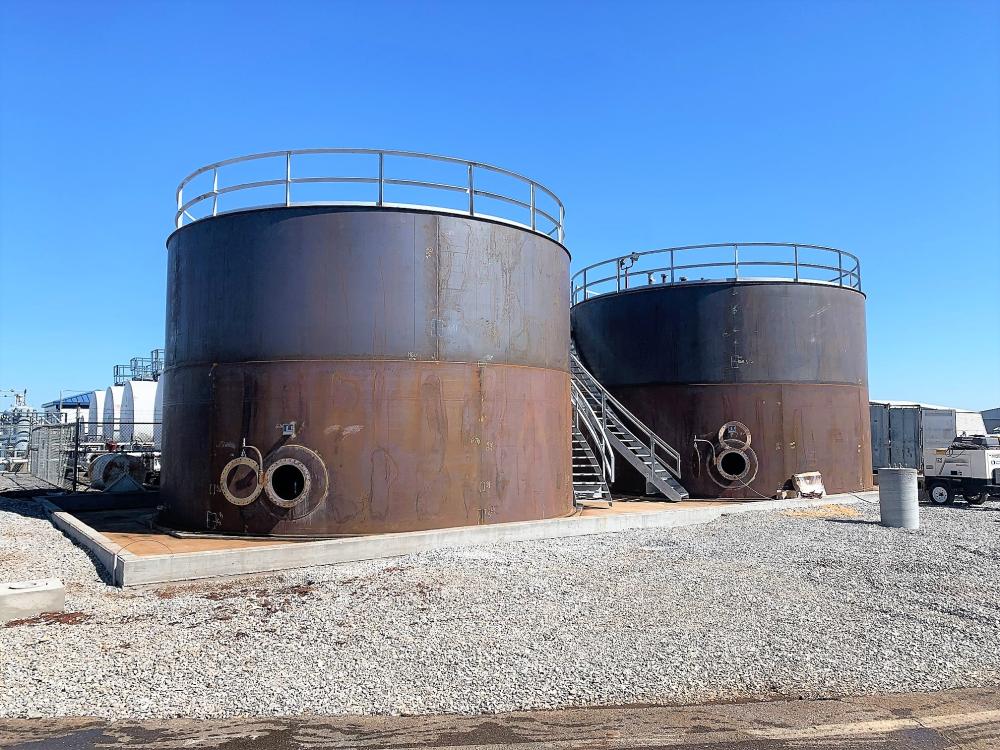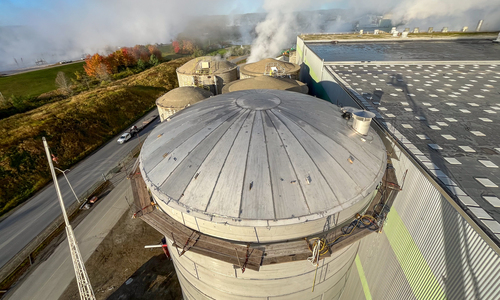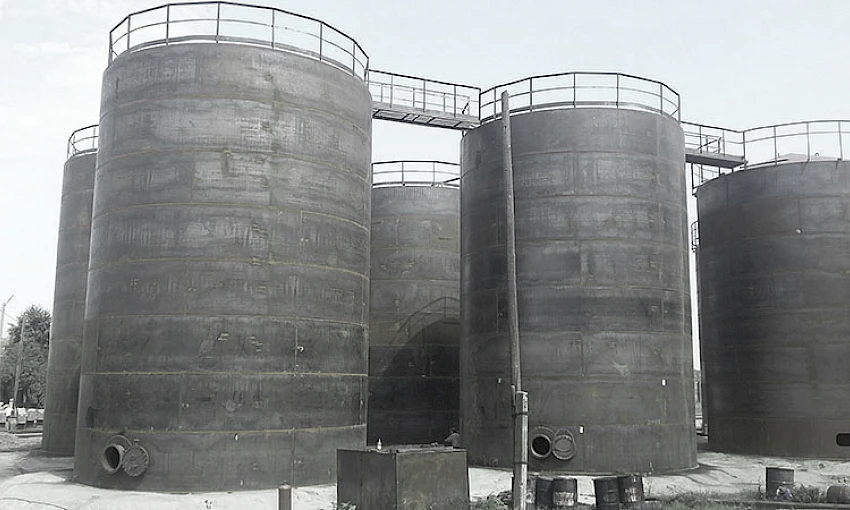Ensuring Compliance Through API 650 Welding Inspection Industry Standards
Wiki Article
A Detailed Consider the Installment Refine of Welding Examination Techniques
Welding examination is a critical process that assures architectural honesty and safety and security. The installment of examination strategies entails a number of methodical steps, each essential to achieving dependable results. From preparation and device choice to carrying out visual and non-destructive examinations, each stage needs cautious attention. Recognizing these treatments can considerably enhance quality guarantee in welding jobs. What difficulties occur in implementing these strategies, and exactly how can they be effectively resolved?Comprehending the Importance of Welding Examination
Welding assessment is a vital component of making certain structural honesty and security in construction and production procedures. This practice entails examining welded joints for flaws, making sure that they satisfy details requirements and policies. By methodically determining weld top quality, assessors can identify issues such as fractures, gaps, and insufficient combination, which can compromise the stamina and longevity of structures.The value of welding evaluation prolongs past immediate safety worries; it aids avoid expensive failings and potential risks in the long-term. Effective assessment techniques foster compliance with market requirements, therefore enhancing the overall dependability of bonded elements. Additionally, a robust evaluation procedure adds to keeping the credibility of suppliers and builders, as it ensures customers of the top quality of their tasks. Inevitably, understanding the significance of welding assessment is critical for advertising secure building practices and ensuring the durability of necessary framework and products.
Selecting the Right Tools for Evaluation
When picking the suitable devices for evaluation, it is important to consider the specific demands of the welding procedure and the materials entailed. Various assessment approaches, such as visual, ultrasonic, and radiographic screening, necessitate unique devices tailored to their special demands. For visual examinations, tools like multiplying glasses and calipers are important for evaluating weld high quality. Ultrasonic screening requires specific devices efficient in sending and receiving audio waves to spot interior problems. Radiographic screening, on the various other hand, utilizes X-ray or gamma-ray sources together with sensitive movie or electronic detectors to disclose inconsistencies.
Additionally, personal protective devices (PPE) is necessary to guarantee the safety of inspectors during assessments. Choosing the right tools not only boosts the precision of inspections but likewise adds to the general honesty and security of the welding job. A detailed understanding of readily available devices and their applications is necessary for efficient welding assessment.
Getting ready for the Inspection Refine
Prior to starting the evaluation process, it is necessary to establish a complete plan that outlines the extent and goals of the assessment. This strategy must include specific requirements that define what comprises acceptable top quality in the welding work being inspected. Determining the relevant codes and criteria is important, as they will certainly assist the assessment criteria and techniques.Furthermore, employees associated with the inspection needs to be sufficiently trained and accredited in welding inspection strategies to guarantee dependability and accuracy. A checklist can be beneficial in organizing the various facets of the evaluation, ranging from tools readiness to ecological conditions that can affect the evaluation.

Logistical considerations such as scheduling, available sources, and interaction between team participants must be attended to. By preparing systematically, inspectors can boost the performance of the examination and guarantee that all crucial factors are duly taken into consideration before proceeding with the examination itself.
Performing Visual Evaluations

Performing visual evaluations is a crucial action in the welding evaluation process, needing cautious prep work to assure reliable evaluation. Inspectors need to be familiar with key defect indicators that can signal potential issues in weld quality. By focusing on these aspects, one can boost the total reliability of the inspection outcomes.
Preparing for Visual Evaluation
Visual assessment works as a crucial very first step in the welding assessment process, guaranteeing that any prospective defects are recognized early (API 650 Welding Inspection). Appropriate preparation read review is essential for reliable visual inspection. Assessors need to start by assessing appropriate documentation, consisting of welding treatments and specs, to understand the task demands. They must collect required devices, such as amplifying glasses, flashlights, and appropriate individual protective tools (PPE) A thorough exam of the assessment location is vital; examiners need to confirm it is totally free and tidy of obstructions. In addition, it is crucial to establish suitable lights problems to improve presence of welds. By taking these preparatory actions, assessors can create a setting for determining disparities and guaranteeing the honesty of the welded frameworksTrick Flaw Indicators
A comprehensive understanding of vital defect signs is important during aesthetic inspections to guarantee the high quality and safety of bonded joints. Inspectors must concentrate on details indications such as fractures, porosity, damages, and insufficient blend. Splits might show up as sharp lines and can compromise structural honesty. Porosity manifests as tiny holes that can damage weld stamina. Undercuts, which are grooves along the weld edge, can lead to stress focus. Incomplete combination indicates that the weld metal did not properly bond with the base material, leading to a weak joint. By methodically recognizing these defects, assessors can determine compliance with sector criteria and enhance the total reliability of bonded structures, ultimately contributing to safer operational problems.Executing Non-Destructive Checking Strategies

Countless non-destructive screening (NDT) strategies are essential to ensuring the integrity of welded frameworks without endangering their capability. These methods permit examiners to assess weld quality and spot problems without creating damages to the products being examined. Typical NDT methods consist of ultrasonic screening, radiographic screening, magnetic bit screening, and color penetrant screening. Each method offers a certain function, resolving various types of why not check here defects such as splits, porosity, or incomplete combination.
Applying NDT strategies requires a methodical approach, beginning with picking the ideal technique based upon the products and the nature of the weld. Training personnel in these strategies is crucial for precise outcomes. In addition, establishing clear treatments and criteria guarantees uniformity throughout the examination procedure. By integrating NDT into the welding evaluation operations, organizations can boost the dependability of their items while minimizing potential risks connected with architectural failings. This proactive method ultimately adds to keeping safety and security and quality standards in bonded buildings.
Recording and Examining Evaluation Results
Effective paperwork and evaluation of evaluation outcomes are important components of the welding evaluation procedure. Exact records of inspection findings serve as a reference for quality control and conformity with sector standards. API 650 Welding Inspection. Inspectors ought to make use of organized forms or digital platforms to log information such as the kind of weld, assessment methods used, and any kind of disparities recognized throughout the examinationComprehensive evaluation is important once information is gathered. This includes comparing outcomes versus developed requirements to recognize patterns or repeating concerns. Statistical tools might be used to quantify problems and evaluate their influence on total weld quality.
Additionally, effective interaction of searchings for to relevant stakeholders is crucial. Records and summaries ought to be clear and concise, highlighting vital understandings and referrals for corrective activities. By systematically evaluating and recording assessment outcomes, organizations can foster continual improvement in welding practices and boost product honesty.
Often Asked Concerns
What Qualifications Are Required to Come To Be a Welding Inspector?
To come to be a welding assessor, one usually requires appropriate qualifications such as AWS CWI, in addition to experience in welding methods, expertise of welding codes, and proficiency in assessment methods to ensure high quality and safety and security requirements.Exactly How Frequently Should Welding Inspections Be Carried Out?
Welding assessments ought to be conducted on a regular basis, usually after each weld is completed, and occasionally throughout projects. Elements such as task intricacy, market requirements, and governing demands can affect the frequency of these inspections.What Is the Price of Welding Inspection Solutions?
The expense of welding evaluation solutions differs substantially based upon elements such as task intricacy, location, and size. Generally, prices range from $100 to $150 per hour, with additional costs for specialized testing and accreditations.Exist Certifications for Welding Inspectors?
Yes, there are different accreditations for welding assessors, including those provided by the American Welding Culture (AWS) and the International Institute of Welding (IIW) These qualifications assure assessors possess the required abilities and expertise for reliable examinations.
Exactly how Do I Choose an Evaluation Provider?
To pick an evaluation provider, one should evaluate qualifications, experience, sector reputation, and consumer testimonials. Furthermore, comparing service offerings and prices can assist guarantee the chosen service provider meets certain task requires efficiently.In addition, workers included in the evaluation must be effectively educated and licensed in welding evaluation techniques to guarantee integrity and accuracy. Carrying out visual evaluations is an important action in the welding examination process, needing careful preparation to assure effective analysis. Aesthetic evaluation offers as a crucial first step in the welding inspection procedure, ensuring that any type of prospective problems are identified early. Reliable documentation and evaluation of examination outcomes are crucial components of view website the welding assessment process. Welding evaluations need to be performed on a regular basis, usually after each weld is completed, and regularly during tasks.
Report this wiki page